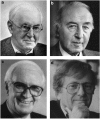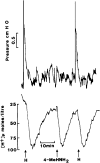Histamine and its receptors
- PMID: 16402096
- PMCID: PMC1760721
- DOI: 10.1038/sj.bjp.0706440
Histamine and its receptors
Abstract
This article reviews the development of our knowledge of the actions of histamine which have taken place during the course of the 20th century. Histamine has been shown to have a key physiological role in the control of gastric acid secretion and a pathophysiological role in a range of allergic disorders. The synthesis of, and pharmacological studies on, selective agonists and antagonists has established the existence of four types of histamine receptor and histamine receptor antagonists have found very important therapeutic applications. Thus, in the 1940s, H(1)-receptor antagonists ('the antihistamines') yielded and still provide valuable treatment for allergic conditions such as hay fever and rhinitis. In the late 1970s and 1980s, H(2)-receptor antagonists (in the discovery of which the two authors were personally involved) revolutionised the treatment of peptic ulcer and other gastric acid-related diseases. The H(3)-receptor antagonists, although available since 1987, have been slower to find a therapeutic role. However, the discovery of nonimidazole derivatives such as brain-penetrating H(3) antagonists has provided drugs that are in early-phase clinical trials, possibly for application in obesity, and a variety of central nervous system disorders, such as memory, learning deficits and epilepsy. Finally, the most recently (1999) discovered H(4) receptor promises the potential to provide drugs acting on the immunological system with possible applications in asthma and inflammation.
Figures



References
-
- ARRANG J.-M., GARBARG M., LANCELOT J.-C., LECOMTE J.-M., POLLARD H., ROBBA M., SCHUNACK W., SCHWARTZ J.-C. Highly potent and selective ligands for histamine H3-receptors. Nature. 1987;327:117–123. - PubMed
-
- BLACK J.W., DUNCAN W.A.M., DURANT G.J., GANELLIN C.R., PARSONS M.E. Definition and antagonism of histamine H2-receptors. Nature. 1972;236:385–390. - PubMed
Publication types
MeSH terms
Substances
LinkOut - more resources
Full Text Sources
Other Literature Sources
Molecular Biology Databases

